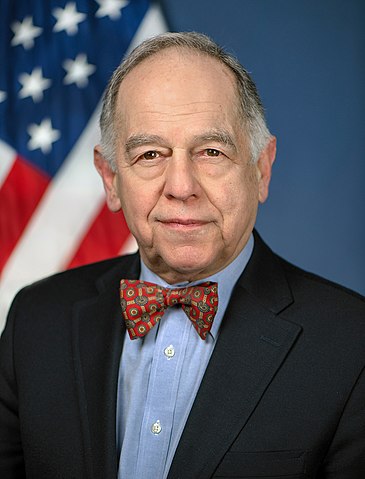Major railroads are under attack by the ag industry, which says lack of personnel is hampering shipments and raising costs for companies forced to rely on secondary freight options.
“There's just not enough rail crews right now,” says Max Fisher, an economist with the National Grain and Feed Association, which sent a letter to Surface Transportation Board Chairman Martin Oberman last month detailing how some of its members have had to shut down flour and feed mills because they ran out of grain. Another facility had to spend $3 million in secondary freight just to keep animals fed.
Agriculture Secretary Tom Vilsack followed with a letter of his own seeking several actions, including allowing the owners of private railcars “to assess delay charges on the railroads for inefficient use of cars,” as some shippers “have reported trains waiting to be picked up for more than a week.”
The repeated complaints led the STB to schedule a hearing for April 26-27. The gathering is likely to be a lively one with a wide range of industries set to outline their concerns about persistent service issues.
In his statement scheduling the hearing, STB Chairman Martin Oberman cited the “serious nature of the service issues” and said he had previously raised concerns about the priority the railroads “have placed on lowering their operating ratios and satisfying their shareholders even at the cost of their customers.”
 STB Chair Martin Oberman
STB Chair Martin Oberman
“Part of that strategy has involved cutting their workforce to the bare bones in order to reduce costs,” Oberman said, noting that over the last six years, the seven Class I railroads — so designated because of their revenues — have reduced their collective workforce by 29%, equal to the loss of about 45,000 employees.
“On too many parts of their networks, the railroads simply do not have a sufficient number of employees,” Oberman said.
Ted Greener, assistant vice president for public affairs at the Association of American Railroads, says “the economy-wide labor shortage is being felt acutely within railroading.” For example, “some workers furloughed at the onset of the pandemic and traffic downturn have not returned to work, the industry has seen a notable number of early retirements, and most recently, railroads have faced challenges in bringing new workers on board.”
But, he adds, the railroads are making strides in hiring “and are optimistic that things will improve, relative to traffic levels.”
Problems originated with the adoption by railroads of precision-scheduled railroading, or PSR, whose goal is, roughly, more efficient asset use, especially locomotives, railcars and manpower.
“What tended to happen when PSR was implemented was a focus on quick results and short-term improvements,” said Nick Little, acting director of the Center for Railway Research and Education at the Eli Broad College of Business at Michigan State University.
“Precision scheduling, far from its intended result of increasing efficiency, has created total communication breakdowns,” Richard Pasco, president of the Sweetener Users Association, said in comments to the STB.
The changes benefited the companies and therefore shareholders, Little said. But railroad companies may have gone too far in cutting operating costs, particularly by reducing manpower. The pandemic reduced demand but when it shot back up, the companies were unprepared, Little said.
“The railroads have suffered largely because yes, they did cut their staff,” Little said. “They might have cut too far. But it's really hard to tell from an external perspective.”
Perhaps more important, he said, is that the railroads have seen their relationships with customers and shippers deteriorate. “Building that back has proved difficult, without getting a lot more people involved in the sales and marketing sides of the business,” he said.
“They've seen themselves too much as just a transportation or even just a railroad company,” he said, “rather than as a key part of their customers’ supply chains.”
The railroads have responded that they are adding staff and addressing service issues in other ways. BNSF President and CEO Katie Farmer, for example, wrote in a letter to NGFA that the company is well on its way to hiring 1,000 Train, Yard and Engine (TY&E) employees in 2022.
Farmer also said BNSF prepared extensively for the spring planting season.
“BNSF is currently running the largest system grain fleet and the largest system fertilizer fleet ever for this spring peak period,” she said. “We are committed to taking the steps to meet agricultural demand and drive growth with our customers.”
Looking for the best, most comprehensive and balanced news source in agriculture? Our Agri-Pulse editors don't miss a beat! Sign up for a free month-long subscription.
 Katie Farmer, BNSF
Katie Farmer, BNSF
Farmer copied in STB members on the letter.
Union Pacific, one of three companies specifically called out by NGFA (Norfolk Southern is the other), also said it’s adding people and locomotives, and “partnering with customers to begin a metered approach” that will allow UP “to continue serving all customers while simultaneously working through a backlog of cars, restoring our ability to process volume — an approach we successfully applied last year with West Coast intermodal traffic.”
UP recently asked customers to reduce their inventories in order to ease traffic congestion, which prompted a warning from CF Industries that customers should expect delays in shipments of nitrogen fertilizer.
Norfolk Southern, for its part, said it was offering starting bonuses up to $5,000, “resulting in record numbers of conductor trainees in our pipeline. We also have adjusted our staffing and traffic flows to meet elevated demand wherever possible.”
“We certainly appreciate that they're taking it seriously,” Fisher says. But he adds that now may be the time for the STB to act. “There probably are not enough regulatory incentives to make sure that everything moves,” he says.
Little said all sides have to work together. And, echoing calls by NGFA and USDA, he said there needs to be more transparency.
“You've got to be able to be prepared to share information, share data,” he said. “And it's not just the type of sharing of data that you hear about all the time now, it's understanding how that data is important to the business plan for everybody involved in the supply chain — the shipper, the customer, the carrier, and other people that are linked further up and down the supply chain.”
He also speaks highly of Oberman, praising his work in Chicago where he served as an alderman and chairman of Metra, the city’s commuter rail system.
“I actually think that Marty Oberman is probably the best person that could be in charge of the STB at this time,” he said. “He is somebody who considers every side of an argument before he makes his mind up.”
The STB also has all five seats filled, Little noted.
As for what the board will do, he says, “I'm hoping they come up with some solutions that can practically be applied.” However, he declined to predict what those might be.
For more news, go to www.Agri-Pulse.com.


